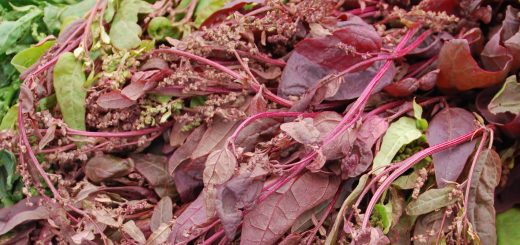Lettuce

It is true, eating all that salad is good for you! While the nutritional value of lettuce varies with the variety, the following excerpt from the University of Illinois website sets the record straight: Lettuce in general provides small amounts of dietary fiber, some carbohydrates, a little protein and a trace of fat. Its most important nutrients are vitamin A and potassium. The vitamin A comes from beta carotene, whose yellow-orange is hidden by green chlorophyll pigments. Beta carotene, of course, is converted to vitamin A in the human body. The darker green, the more beta carotene.
According to the American Cancer Institute and the American Cancer Society, foods rich in vitamin A and C (antioxidants) offer protection against some forms of cancer. Lettuce, except iceberg, is also a moderately good source of vitamin C, calcium, iron, and copper. The spine and ribs provide dietary fiber, while vitamins and minerals are concentrated in the delicate leaf portion.
While lettuce may be synonymous to salad for many people it doesn’t have to be boring. Get creative! Any variety of items can be added to your greens to make a delicious meal – just use your imagination (and taste buds). Various lettuce greens can act as a “cup” or “wrap” for seafood or chopped meats (beef, turkey, chicken), Asian style. Or, they can add crunch and texture to a simple but hearty sandwich. You can also sauté it like other greens and eat it warm. Or try grilling lettuce by halving or quartering a head of sturdy greens, brushing with olive or canola oil, seasoning with a bit of salt and pepper, and placing on the grill for a few minutes until grill marks appear. It adds a nice smoky flavor to your dish.
Fun note: Egyptians included lettuce in their diet over 4500 years ago!


